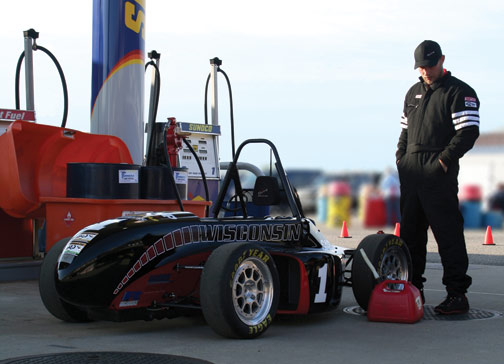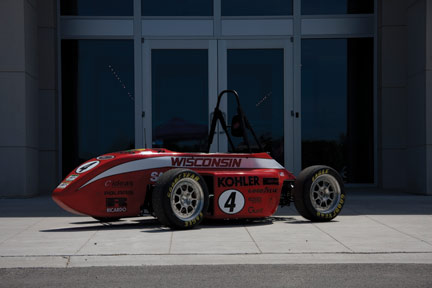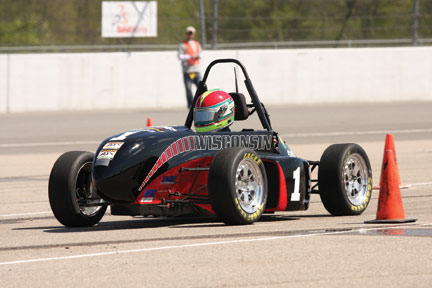The University of Wisconsin Formula SAE team competes against over 130 universities from around the world in an annual competition held at Michigan International Speedway. The competition is based on the design and manufacture of a small scale open wheel, open cockpit racecar. Teams are usually comprised of engineering students who, in the fall semester, design the car using Computer-Aided-Design programs and, in the spring semester, manufacture these designs to create a competition ready vehicle.

In 2007, Wisconsin Racing took 1st Place at the international competition and in 2008 came away with 4th Place and the top United States team. The team also competes at Virginia International Raceway where, in 2008, the team took home 1st Place at the inaugural competition.
In 2009, the team made a drastic switch from a four cylinder Suzuki GSXR600 motorcycle engine to a single cylinder KTM 525. The main reason for the change was a new rule which made fuel economy worth double the points it was previously. This change also brought about the implementation of a turbocharger. The team uses an IHI turbocharger to increase the vehicle’s performance. Unfortunately, this was a major change made by the team and the vehicle failed to finish the endurance event due to an engine failure. The team was on pace to a top 10 finish, but with the engine failure, dropped all the way to 35th. The 2010 car has focused on increasing the performance while maintaining reliability so that another engine failure does not occur.
Control Strategies and Data Acquisition Analysis

Two important aspects of the vehicle are the control strategies used and data acquisition analysis. One way the team incorporates both of these is with the use of Hall effect proximity sensors (AutomationDirect part number PY4-AN-3A), used as wheel speed sensors by sensing an encoder wheel located within the upright assembly.
This traction control system is very effective in reducing wheel slip and decreasing lap times; it decreases wheel slip a stunning 63 percent. The traction control system reduces lap times by an average of 0.8 seconds over the course of a 30 second lap, and greatly increases the consistency of lap times. This traction control system allows the drivers to focus more on the track rather than focusing on trying to maintain optimum traction.One important use of wheel-speed sensors is for the traction control system. Traction control is a useful system which reduces the torque output of the engine in the event of traction loss. Traction control requires feedback from the wheel speeds on all four wheels, and it uses this feedback to determine the amount of wheel slip on the rear tires in comparison to the front tires. It then takes this wheel slip percentage and retards the spark advance to reduce the torque output of the engine.
Another way the proximity sensors benefit the team is through the use of data acquisition. With data logging hardware, the team can analyze each lap by comparing parameters such as the vehicle’s speed. This is beneficial in the development of the vehicle and also in the development of the driver. Monitoring the car can prevent potential failures, and aid in troubleshooting any problems that do occur.
To learn more about discrete sensing, click here.
Originally Published: Dec. 1, 2010


